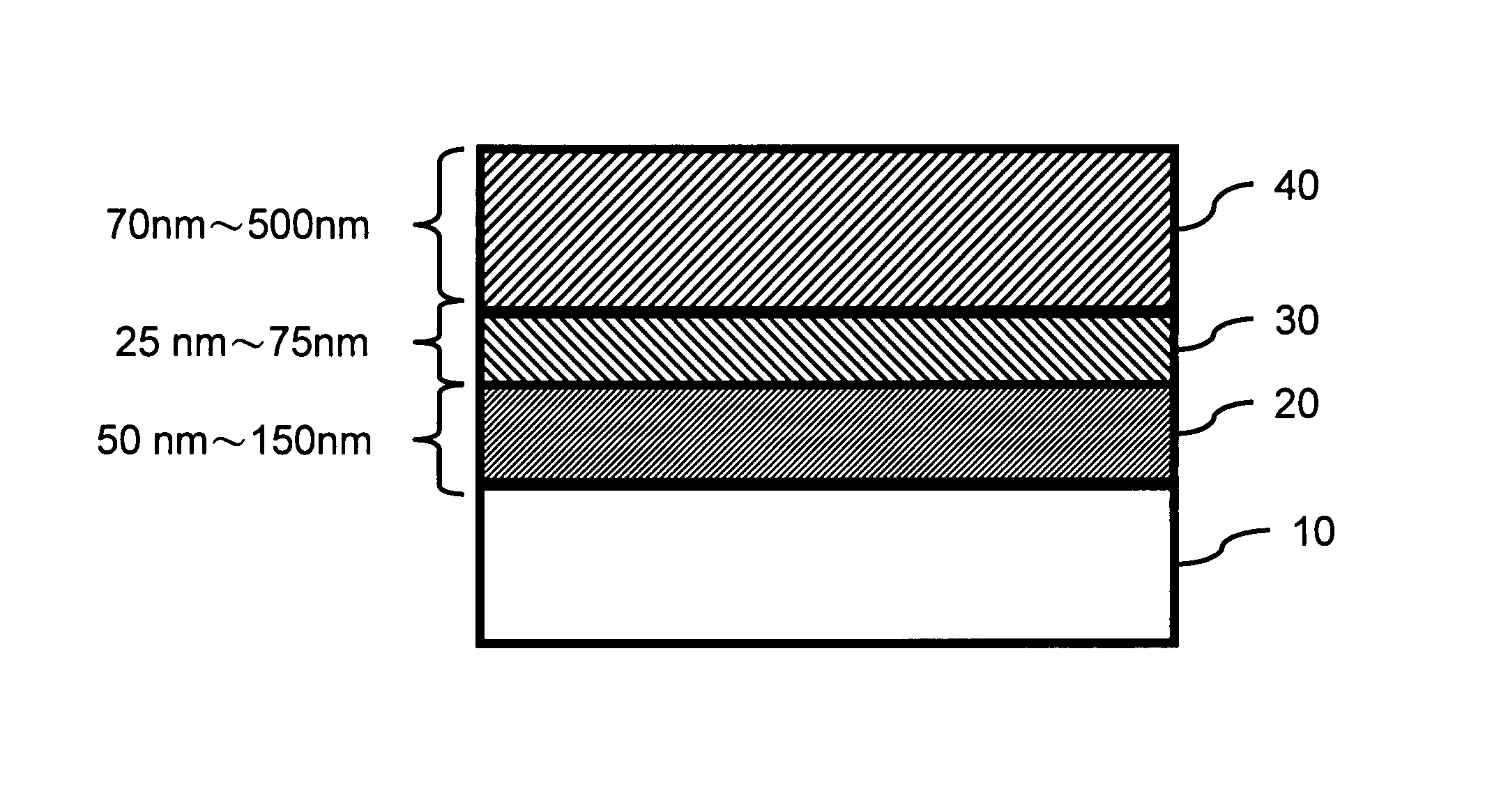Construction of thin strain-relaxed SiGe layers and method for fabricating the same
a technology of strain-relaxed sige and construction method, which is applied in the direction of basic electric elements, electrical apparatus, semiconductor devices, etc., can solve the problems of long time, long time-consuming, and inducing the increase of roughness of epitaxial layer surface, so as to reduce the density of threading dislocation and surface roughness
- Summary
- Abstract
- Description
- Claims
- Application Information
AI Technical Summary
Benefits of technology
Problems solved by technology
Method used
Image
Examples
Embodiment Construction
[0025]According the invention, a Si(C) layer is adopted to change the strain-relaxed mechanism of the SiGe epitaxial layer formed on the Si(C) layer. Refer to FIG. 1 illustrating the schematic construction. The construction includes a semiconductor substrate 10, the preferred embodiment, which is a Si substrate, a buffer layer 20 with a thickness of 50 nm to 150 nm formed on the semiconductor substrate 10, a Si(C) layer 30 with thickness of 25 nm to 75 nm formed on the buffer layer 20, and a SiGe epitaxial layer (Si1−xGex) 40 with thickness of 70 nm to 500 nm formed on the Si(C) layer 30. The lattice of the SiGe epitaxial layer 40 is different from that of the SiGe buffer layer 20. The thickness of the layers may be adjusted according to different need.
[0026]The Si(C) layer 30 is a heterostructure alloy mixed by VI family elements. The Si(C) layer 30 changes the strain mechanism of the SiGe epitaxial layer 40 such, that the SiGe epitaxial layer 40 has the characteristic of high stra...
PUM
 Login to View More
Login to View More Abstract
Description
Claims
Application Information
 Login to View More
Login to View More - R&D
- Intellectual Property
- Life Sciences
- Materials
- Tech Scout
- Unparalleled Data Quality
- Higher Quality Content
- 60% Fewer Hallucinations
Browse by: Latest US Patents, China's latest patents, Technical Efficacy Thesaurus, Application Domain, Technology Topic, Popular Technical Reports.
© 2025 PatSnap. All rights reserved.Legal|Privacy policy|Modern Slavery Act Transparency Statement|Sitemap|About US| Contact US: help@patsnap.com



